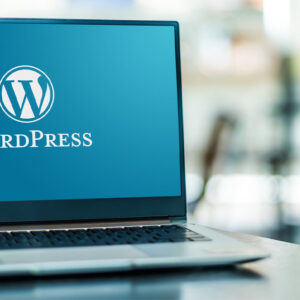Pay-per-click (PPC) advertising is a powerful way to boost visibility and drive sales for your business. However, running a successful PPC campaign is not just about setting a budget and letting it run. Optimization plays a crucial role in ensuring that your campaigns deliver the best return on investment (ROI). This article will guide you through actionable strategies to fine-tune your PPC campaigns for maximum results.
Understanding PPC Campaigns and ROI
What Is PPC Advertising?
PPC advertising is a digital marketing model where advertisers pay a fee each time their ad is clicked. It’s commonly used on platforms like Google Ads, Amazon, and social media channels.
What Is ROI in PPC Campaigns?
ROI measures the profitability of your campaign. It’s calculated as:
ROI = (Revenue from Ads – Ad Spend) ÷ Ad Spend × 100
A higher ROI means your campaign is generating more profit relative to its cost.
Step 1: Conduct Comprehensive Keyword Research
Keywords are the backbone of any PPC campaign. The right keywords ensure that your ads appear to the right audience.
- Use Keyword Research Tools: Tools like Google Keyword Planner, SEMrush, and Ahrefs can help you find relevant keywords with high search volume and low competition.
- Target Long-Tail Keywords: Long-tail keywords are more specific and often have lower costs per click (CPC). For example, instead of “shoes,” use “men’s running shoes size 10.”
- Analyze Competitor Keywords: Look at what your competitors are targeting to identify gaps and opportunities.

Step 2: Optimize Ad Copy for Engagement
Your ad copy plays a critical role in attracting clicks. A well-crafted ad not only drives traffic but also improves your Quality Score.
- Include Keywords in the Ad Copy: Incorporate primary keywords in the headline and description.
- Focus on Benefits: Highlight what makes your product or service unique. For instance, “Free shipping on all orders” or “24/7 customer support.”
- Add a Strong Call-to-Action (CTA): Encourage users to take action with phrases like “Shop Now,” “Learn More,” or “Get Started.”
Step 3: Segment and Target Your Audience
Reaching the right audience is essential for maximizing ROI.
- Demographic Targeting: Adjust settings based on age, gender, location, and interests.
- Behavioral Targeting: Use data on past behaviors, such as browsing history or purchase habits, to tailor your ads.
- Remarketing: Retarget users who have interacted with your brand but didn’t convert. Remarketing ads often have higher conversion rates.
Step 4: Set a Realistic Budget
Your budget directly impacts your PPC campaign’s success.
- Start Small: Begin with a modest budget and increase it as you analyze performance.
- Allocate Budget by Campaign Goals: For instance, spend more on high-converting campaigns and less on experimental ones.
- Monitor Cost-Per-Click (CPC): Adjust bids to ensure you’re not overspending on low-performing keywords.
Step 5: Monitor and Adjust Bids
Bid adjustments can significantly influence your ROI.
- Use Automated Bidding Strategies: Platforms like Google Ads offer options like Target CPA (cost per acquisition) to optimize bids automatically.
- Adjust Bids Based on Performance: Increase bids for high-performing keywords and reduce them for low-performing ones.
- Time and Location Adjustments: Optimize bids for specific times of day or geographic locations that yield better results.
Step 6: Improve Landing Pages
Your ads might get clicks, but if the landing page doesn’t convert, your ROI will suffer.
- Make It Relevant: Ensure the landing page matches the ad’s promise. For example, if your ad promotes a discount, highlight it on the landing page.
- Optimize for Mobile: With increasing mobile traffic, a mobile-friendly landing page is non-negotiable.
- Add Clear CTAs: Guide users with actionable CTAs like “Sign Up Today” or “Claim Your Discount.”
Step 7: Use Negative Keywords
Negative keywords help prevent your ads from appearing for irrelevant searches, saving your budget.
- Identify Irrelevant Terms: Use search term reports to find keywords that don’t align with your business.
- Regularly Update Your Negative Keywords List: Continuously refine this list to avoid unnecessary expenses.
Step 8: Track and Analyze Performance Metrics
Regularly monitor key metrics to understand your campaign’s effectiveness.
- Click-Through Rate (CTR): A higher CTR indicates that your ad is engaging.
- Conversion Rate: This shows how many users completed the desired action after clicking your ad.
- Quality Score: Platforms like Google Ads use this metric to measure ad relevance and user experience.
Step 9: Leverage A/B Testing
Testing different campaign elements can reveal what works best.
- Test Ad Variations: Experiment with headlines, CTAs, and descriptions.
- Test Landing Pages: Compare designs, layouts, and content.
- Analyze Results: Use data from tests to refine your campaigns.
Step 10: Incorporate Advanced Features
Explore advanced PPC features to gain an edge over competitors.
- Dynamic Ads: Create ads that automatically match user queries.
- Ad Extensions: Add extra information, such as phone numbers, links, or promotions, to your ads.
- Geofencing: Target users within a specific geographic area.
Examples of PPC Campaign Success
Case Study 1: Online Retailer
An e-commerce store used negative keywords to eliminate unqualified traffic, improving CTR by 15% and reducing CPC by 10%.
Case Study 2: Local Business
A restaurant optimized ads for location-specific searches, increasing foot traffic by 20% during peak hours.
Conclusion
Optimizing PPC campaigns requires continuous effort, analysis, and adaptation. By focusing on the right keywords, crafting compelling ad copy, and regularly refining your strategy, you can significantly boost your ROI. Start small, experiment, and let data guide your decisions for long-term success.
FAQs:
1. What is PPC Campaign Optimization?
PPC campaign optimization involves refining your advertising strategy to increase conversions while reducing costs. This includes targeting the right keywords, adjusting bids, and analyzing performance data to ensure you’re getting the best return on investment (ROI).
2. How Do I Choose the Right Keywords for My Campaign?
Start with keyword research tools to identify high-traffic, low-competition keywords relevant to your product. Focus on long-tail keywords that are specific to your audience’s intent, as these often lead to better conversion rates.
3. Should I Use Automated Bidding or Manual Bidding?
It depends on your goals. Automated bidding can save time and adjust bids based on real-time data, while manual bidding gives you more control over how much you’re willing to pay per click. Test both to see what works best for your campaign.
4. How Do Negative Keywords Improve ROI?
Negative keywords prevent your ads from showing for irrelevant searches, ensuring your budget isn’t wasted on unqualified traffic. For example, if you sell premium shoes, you might add “cheap” as a negative keyword.
5. How Can I Improve My Ad Copy to Boost Click-Through Rates (CTR)?
Write clear, engaging ad copy that highlights unique selling points, includes a call-to-action (CTA), and uses keywords. Test different headlines and descriptions to find the most effective combinations.
6. How Often Should I Monitor My PPC Campaign Performance?
Regular monitoring is crucial—check performance weekly or bi-weekly. Look at metrics like CTR, cost-per-click (CPC), and conversion rates to identify areas for improvement.
7. What Role Does Landing Page Optimization Play in ROI?
A well-optimized landing page increases conversions by providing a seamless user experience. Ensure the page is mobile-friendly, loads quickly, and matches the intent of your ad with clear CTAs and relevant content.
8. How Can I Use A/B Testing to Optimize My PPC Campaigns?
A/B testing involves comparing two versions of an ad or landing page to see which performs better. Test elements like headlines, images, CTAs, and ad formats to find the best-performing combination.
9. What Metrics Should I Focus on for Evaluating PPC Performance?
Focus on ROI-related metrics like conversion rate, CTR, cost-per-acquisition (CPA), and average order value (AOV). These provide insights into the effectiveness of your campaigns in driving sales.
10. How Can I Reduce My Cost-Per-Click (CPC) Without Losing Traffic?
Lower your CPC by improving your Quality Score, which reflects ad relevance, CTR, and landing page experience. Additionally, refine your targeting and focus on high-performing keywords with lower competition




